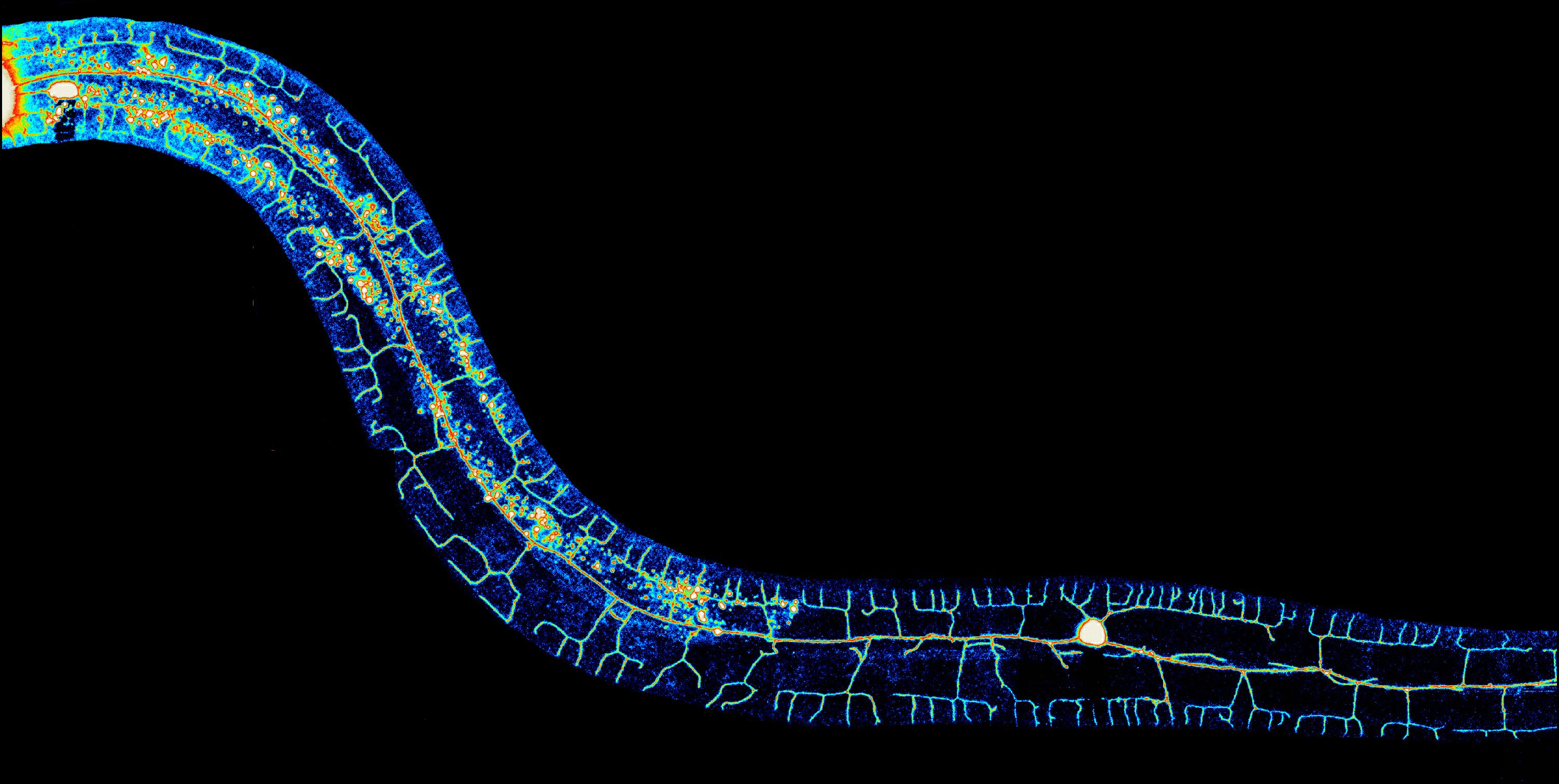The neurons have structures similar to the meniscus; The discovery may have far-reaching future consequences for the restoration of damage to the nervous system * Researchers from the Hadassah School of Medicine and the Hebrew University and the Albert Einstein School of Medicine in New York also participated in the study

Doctoral student Mittal Oren-Suisa came to the discovery as part of her doctoral thesis, under the guidance of Professor Benny Podbilevich from the Faculty of Biology at the Technion. The study used a tiny worm called C. elegans, which is used for this type of research. "Neurons have a complicated morphology," says Professor Podbilevich. "In our mind they look like trees and have branched branches. In these branched neurons, the branches serve as information sensors, and are therefore important for the normal functioning of that neuron. Although these neurons have been studied for over a hundred years, very little is known about how they are formed and the importance of their structure to function. Each human has a hundred billion neurons, connected to each other by synapses. The research question that led us was how the branched neurons are formed and whether their shape is important for their activity."
The worm C. elegans has only 302 neurons. About thirty years ago, British researchers, led by Professor John White, mapped all the neurons and the synapses connecting them by looking with an electron microscope at thousands of thin sections along the length of the worm. They found that in the worm the neurons are simple, with single branches.
Over the years, researchers discovered neurons in the worm, which have branches. The Technion researchers focused on these neurons, and found that they are more branched than previously thought and consist of a large number of branches, which extend over the entire body of the worm. They looked at the neurons using a fluorescent protein (luminescent) in a confocal microscope, which is capable of producing precise optical sections. They made dozens of cuts and precisely mapped each of the branches of these neurons, hundreds in number. "Then we found a recurring unit, which looks like a menorah with a variable number of reeds," says Mittal Oran-Suisa. Later, the researchers saw how this "chanukiah" develops. It starts as a cell from which "branches" develop and come out. Professor Martin Chalfi, winner of the Nobel Prize, found already in the eighties of the last century, that these two neurons are sensory neurons that sense pain.
Later in the study, the Technion researchers found how the branches start from each "trunk" of the "chanukiah". When they videotaped it, they saw that it was a very dynamic pattern. When a branch turns in the wrong direction for some reason, the worm "corrects" it by pulling it back. The researchers tried to understand this phenomenon, so in the continuation of their research, they looked for proteins that affect the action of attraction. They interfered with the natural process with the help of a mutation they found ten years ago - in a gene called EFF-1 responsible for fusion between cells.
"When we looked at mutations (worms without this gene) we saw that they did not have 'menorahs', but a complete 'mess' of branches," says Professor Podbilevich. "From here we concluded that this garden is responsible for the construction of the 'menorahs', it is the 'sculptor', it is the 'designer', and it remains for us to check how it does it."
In their examination, the researchers found that this is done by two main mechanisms - a mechanism that knows how to pull back unnecessary branches that have grown excessively or in the wrong directions and a mechanism that knows how to fuse stray branches, thereby stopping their migration.
"It was important to find such genes, because with their help it will be possible to find, also in humans, the genes responsible for building the neurons in the human brain," they say. "This could possibly be used for healing after a fatal injury to the brain or spinal cord."
Also participating in the study were Dr. Gidi Shemer from the Faculty of Biology at the Technion and now at the University of North Carolina in the USA, Dr. David Hall from the Albert Einstein College of Medicine - in New York, USA and Dr. Milat Trainin from the School of Medicine, Hadassah at the Hebrew University.

6 תגובות
The article is boring under I don't understand what I'm doing on this wretched website that's how you'll find life signed Ofek Takotsky Hod Hasharon High School Hadrim.
This is why it is called an optical section, because it is not a real section but an optical effect of the microscope.
Quote: "In a confocal microscope, which is able to produce precise optical sections".
A confocal microscope does not produce sections of any kind, precise or otherwise.
The confocal enables a better resolution than a normal light microscope, thanks to the method of illumination of the object being examined, and the reflection of light from the object through an aperture.
Classical science by observation and investigation
Well done
"Professor Martin Chalfi, winner of the Nobel Prize, found already in the eighties of the last century that these two neurons are sensory neurons that sense pain."
It is not clear from the paragraph which neurons are involved..where were they taken from?